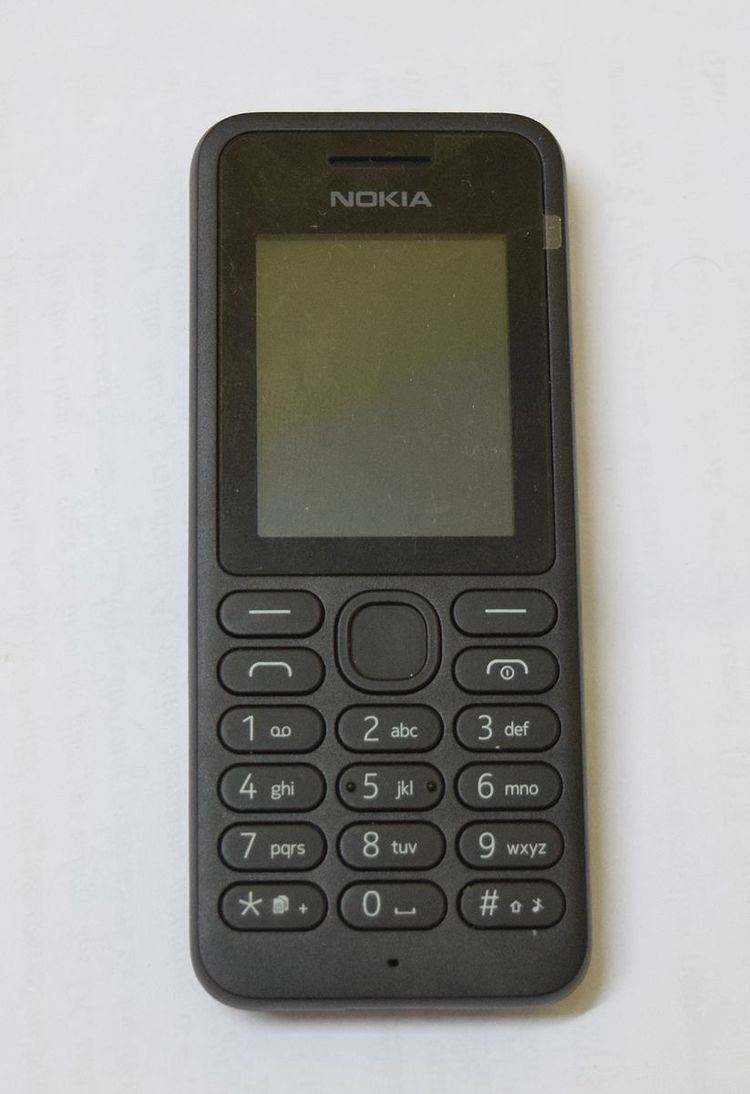 | ||
Feature phone is a term typically used as a retronym to describe low-end mobile phones which are limited in capabilities in contrast to a modern smartphone. Feature phones typically provide voice calling and text messaging functionality, in addition to basic multimedia and Internet capabilities, and other services offered by the user's wireless service provider.. They also tend to use a proprietary, custom-designed software and user interface, while smartphones generally use a mobile operating system that often shares common traits across devices, including iOS, Android, or Blackberry OS.
Contents
- History
- Platform
- For manufacturers
- To consumers
- Difference between smartphones and feature phones
- References
Also referred to as dumb phones, in reference to the literal opposite of the term "smart phones", feature phones are marketed as a lower-cost alternative to smartphones. Nowadays, feature phones are primarily specific to niche markets or have become merely a preference; for instance, in the United States some people favor feature phones over smartphones for the reason of simplicity.
History
The first cellular phone, the Motorola DynaTAC released in 1984, could be considered a feature phone by today's standards, despite its inability to do anything more than making voice calls. Despite the introduction of smartphones in the mid-1990s, ignited with the August 1994 release of the IBM Simon and made popular by the release of the BlackBerry line of handheld personal digital assistants from Research in Motion, feature phones enjoyed unchallenged popularity into the early 2000s. During this period, best-selling feature phones, such as those made by Motorola and Nokia, not only received mid-range pricing in a wireless provider's lineup, they made up the bulk of retail sales as smartphones were still considered a niche category for business use.
The tide began to turn in January 2007, when Apple Inc., a company then known for its production of the iPod media player and the iMac personal computer, introduced the iPhone, featuring an all-touch user interface closely based on that of the iPod Touch. Featuring access to millions of mobile apps from Apple's iTunes Store (now the App Store), it was considered to be among the first consumer-oriented smartphones. At the event, Steve Jobs proclaimed that "the phone was not just a communication tool but a way of life". The iPhone immediately became a smash hit among consumers, selling over 6 million units, and since then Apple has released newer, updated models on an annual basis.
At around the same time, Google was developing its Android operating system as a direct competitor to Nokia's Symbian and Microsoft's Windows Mobile operating systems. The iPhone's success lead to the company, lead by Larry Page, turning its methodology around, and Android as an open-source software platform for mobile phones was announced in November 2007 together with the founding of the Open Handset Alliance, and the first Android smartphone, the HTC Dream, was released in October 2008 in the US. Google would go on to launch its Nexus line of smart devices and collaborate with various original equipment manufacturers, including popular feature phone manufacturers Samsung, LG, Sony, and Motorola, to adapt Android for devices of varying form factors and computing platforms.
By the turn of the decade, iOS and Android, together with less-common platforms such as BlackBerry 10 and Windows Phone, had shifted the smartphone focus from being a niche to mass market consumers. Feature phones were primarily designed as communication devices, and manufacturers had, up to that point, been enjoying record sales of cell phones based more on fashion and brand, rather than technological innovation. Though smartphones cost more to produce, they were delivering higher profit margins than feature phones, leading to manufacturers and wireless carriers shifting towards smartphones.[1] As a result, smartphones now have the largest selection and advertising among carriers, which devoted less and less store space and marketing to feature phones. In 2013, smartphones outsold feature phones for the first time, accounting for 51.8% of mobile phone sales in the second quarter of that year.
In an effort to provide parity with smartphones, modern feature phones have also incorporated support for 3G and even 4G connectivity, multi-touch screens of varying sizes, various sensors ranging from proximity sensors and GPS to Bluetooth and NFC, plus access to popular social networking services. However, their functionality and support for third-party apps purchased or downloaded via an app store or other online distribution platform are still relatively limited in comparison to smartphones. Despite these drawbacks, feature phones had accounted for 70% of mobile phones sold worldwide in 2011.
Platform
For manufacturers
Feature phones are often kept in phone manufacturers' lineups for several reasons:
To consumers
From the point of view of markets and consumers, there are several situations for which basic and feature phones are beneficial:
Difference between smartphones and feature phones
Although a feature phone is a low-end device and a smartphone a high-end one, there is no standard way of distinguishing them. Smartphone and feature phone are not mutually exclusive categories. A complication in distinguishing between smartphones and feature phones is that over time the capabilities of new models of feature phones can increase to exceed those of phones that had been promoted as smartphones in the past. Because technology changes rapidly, what was a smartphone ten years ago may be considered only a feature phone today. For example, today's feature phones typically also serve as a personal digital assistant (PDA) and portable media player and have capabilities such as cameras, touchscreen, GPS navigation, Wi-Fi and mobile broadband internet access, and even mobile gaming.
In contrast to smartphones, feature phones more commonly run on proprietary firmware, with third-party software support through platforms such as Java ME or BREW.
